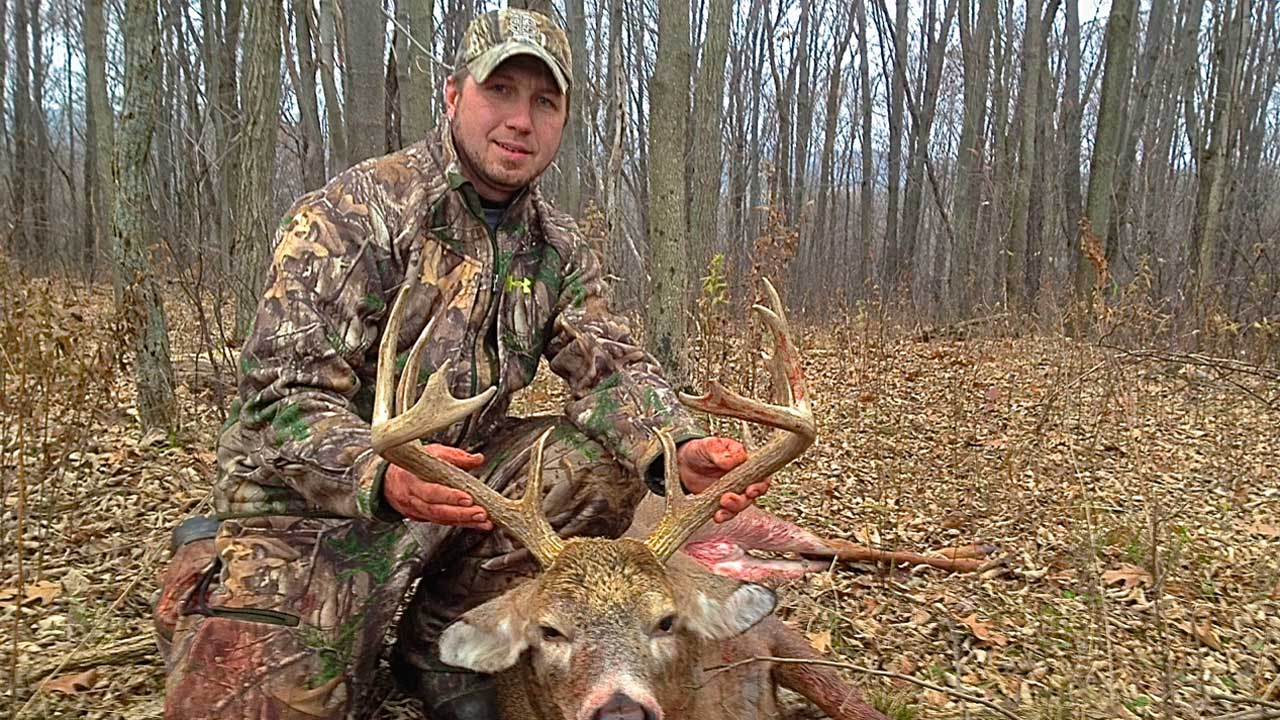We all hope for short and easy bloodtrails that lead right to our trophy. But when things look grim in your deer recovery efforts, try the grid search. Here’s how to do it.
There was a raw dampness hanging in the air that cold November morning. The season had been long and frustrating, especially after receiving news that the burly Pope & Young bruiser I had spent the past six weeks pursuing was taken on a neighboring farm a few days earlier. He was a buck I wanted badly.
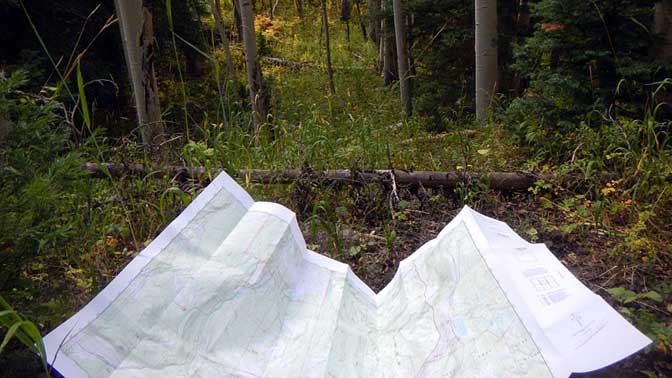
Breakdown the property into zones and sweep each zone in your effort to recover your deer through a grid search.
Forlorn and detached on this final day of the 2008 Pennsylvania archery season, I conceded the decision to lower my standards and take any decent buck I could get, though the prospects didn’t look promising.
By late morning, however, a commotion broke out in the far corner of the CRP field my stand overlooked. As I rose to my feet, a doe sprang from the high grass like a fleeing cricket, clearly antagonized by a grunting aggressor hot on her trail.
The doe moved closer my way, and her boisterous suitor finally materialized. He wasn’t anything special, but with mere hours remaining in the season, I instantly pegged this goofy 5-point with a 17” spread as a buck I was now willing to shoot.
Like clockwork, he ran her through the field toward my ambush on the edge of a high-traffic saddle near the corner woodlot. I drew my bow as the doe entered the timber 15 yards away, knowing the buck trailed just a few lengths behind. When he stopped broadside in my shooting lane, I couldn’t believe the slam-dunk opportunity I was presented.
Then it happened.
Tucking my pin behind the buck’s shoulder for an easy double lung, I eased my index finger over the trigger of my release. But just as I squeezed off the shot, the buck lunged forward to chase the impatient doe. It happened in less than a second, and the connection between my eyes, mind and finger didn’t have time to register until it was too late. The arrow was already on its way.
I watched in remorse as my errant broadhead ripped through the paunch of the buck several inches behind his ribcage. The sound, almost like someone opening the zipper of a heavy duffel bag, haunts me to this day.
The buck sharply hunched his back and slowed from a gallop to a walk. I shook my head in disgust as he disappeared across the flat and down over the ridge. Silently cursing myself, I acknowledged this buck was going to die a long, slow death at my expense. It became my lowest point in an already disappointing season.
Knowing the buck would require several hours to expire, I made a mental note of the last place I saw him before exiting the flat, and then crawled down to retrieve my arrow and look for blood.
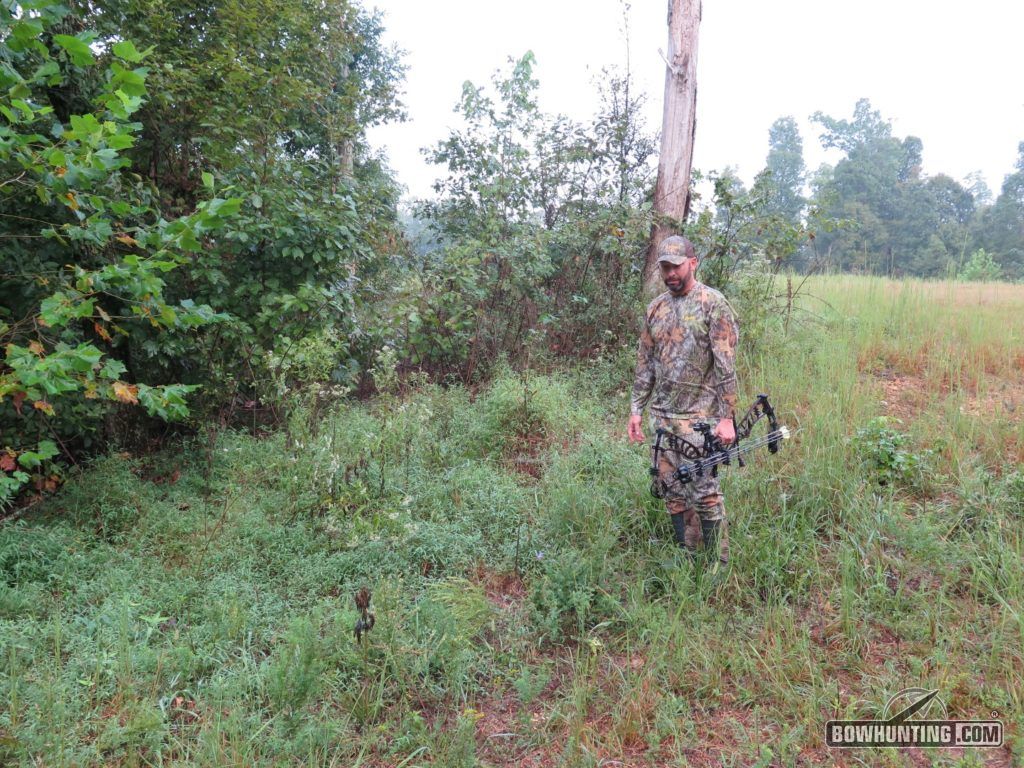
We always hope for short and easy bloodtrails, but there will be times when extra recovery efforts must be made.
As suspected, intestinal residue greased the arrow, and the blood trail for the first twenty yards was scant. I tied a length of surveying ribbon on a limb near the tiny bit of sign I located, collected my gear and quietly departed the area.
The afternoon brought cold rain and sleet, further dampening the ground, as well as my spirits. According to the weather forecast, the precipitation would continue throughout the night but hover just above freezing. To avoid making matters worse, I wisely made the call to wait until morning and patiently put together a plan for recovering my deer.
As disappointed as I was with myself at the time, I now realize this exact scenario could’ve happened to anyone. Deer move, branches redirect arrows, and sometimes we just screw up and make poor shots… after all, we’re only human.
It is more so what we do after the shot that impacts the likelihood of recovering a lost deer. Even with minimal blood and sign to follow, we owe it to the deer to devote our best efforts in ensuring it doesn’t go to waste. When the trail runs cold or the situation turns grim, an organized grid search becomes the best solution for recovery.
Deer hunting, guru, Bob Foulkrod refers to the grid search as a, “manpower-intense undertaking.” “I like to use eight to twelve people. Using a compass, I line people in a row, shoulder-to-shoulder, to go in one direction. The searchers must be close enough to one another to clearly see the feet of the person on each side. The line moves slowly, searching for the deer as it goes. After going 50 to 100 yards, or reaching a barrier such as a fence or road, the line “flip-flops”, then moves across the same tract. This is repeated until a grid has been thoroughly searched. If the deer has not been found, the same thing is done in the direction the animal is thought to have gone. After using the grid system for recovery everywhere from Mississippi to Montana, I have yet to see it fail to turn up a lost deer.”
Step 1: Don’t rush it
You may have noticed I deliberately didn’t pursue my buck. I knew the shot was marginal and didn’t want to run the risk of bumping him before he had time to bed down and die. Too often, hunters make the mistake of pushing a deer by prematurely taking up a tracking job.
If left alone, a wounded deer will often travel a short distance before bedding down. Depending on temperature and precipitation, I almost always err on the side of caution and give the deer more time than required if I’m not sure of the shot.
On this particular hunt, I may have had the rain and sleet working against me, but knowing I had less than adequate blood to follow anyway, I placed greater stock in being patient. As much as I wanted to go searching that very evening, the cold overnight temperatures convinced me to wait until the following morning when daylight would be on our side.
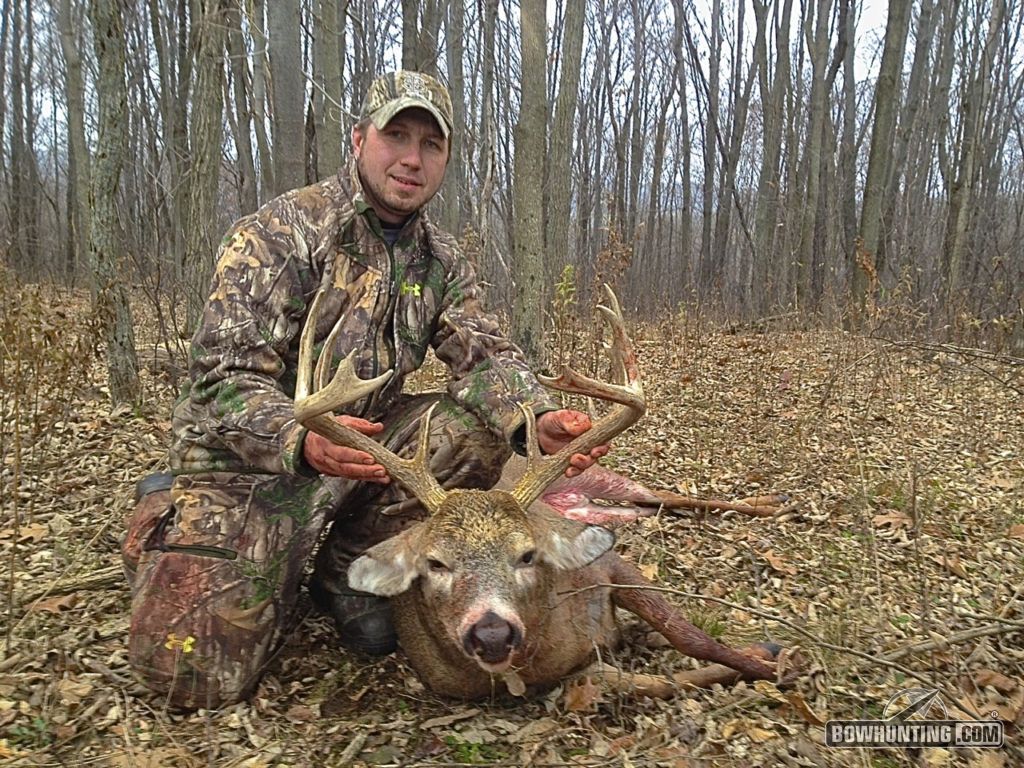
Finding your buck after a long recovery effort is a bittersweet reward.
Step 2: Enlist Help
Reaching out to friends and relatives can pay off big in situations where a grid search is necessary. Not only does it increase the likelihood of spotting your deer with additional sets of eyes, but the old saying, “Two heads are better than one,” applies here as well.
After crippling a deer, one’s mind doesn’t always function properly. It is easy to let emotions cloud judgment, and it’s helpful to have a neutral sounding board to clearly think things through. Bouncing ideas off other hunters or even replaying the shot scenario back in your mind is a good start to determining the next plan of action.
You might also consider contacting the neighboring property owners ahead of time, just in case your deer might have traveled farther than expected. It’s better to keep everyone in the loop from the start, rather than scrambling for access in the middle of the search. Most decent folks understand and do what they can help.
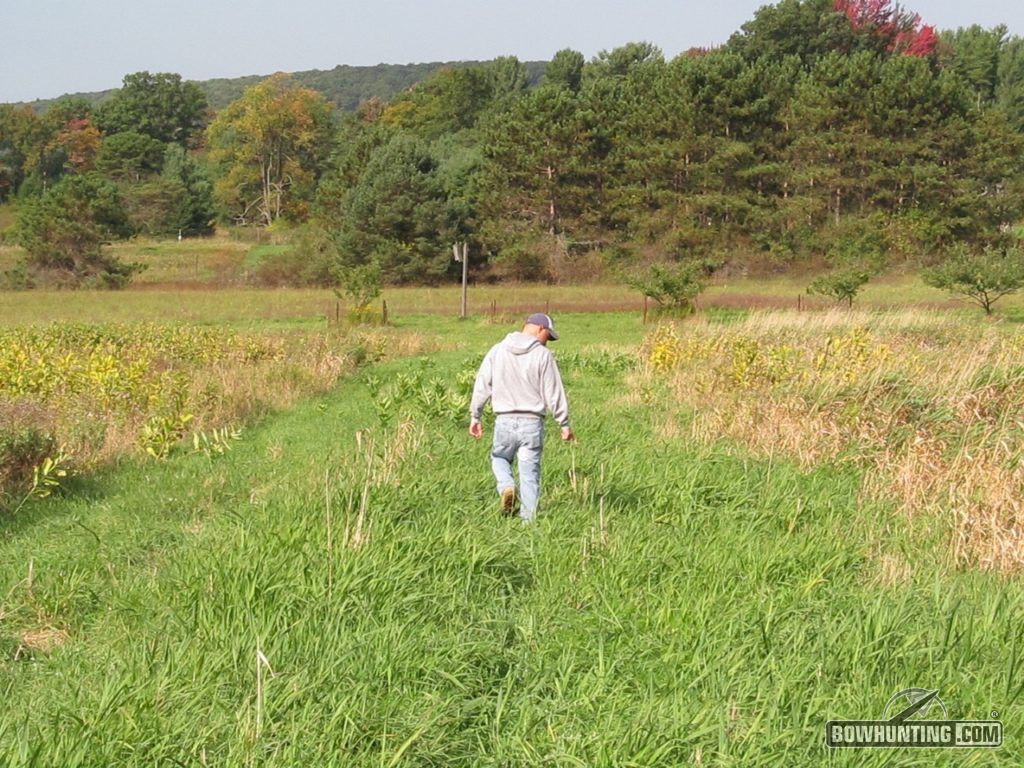
Don’t go it alone when trying to recover deer. Gather your friends and do a grid search.
Step 3: Assess the situation
The topography of the land is probably the most essential factor to consider when mapping out an effective grid search. Though not impossible, it is unlikely for a fatally wounded deer to flee for high ground unless absolutely forced to do so.
More times than not, they will continue on the path of least resistance, often traveling downhill toward a thick, low-lying bedding area or water source. They might not always reach their intended target, and they sometimes deviate from the trail, but they typically tend to head for low cover, so focus on these areas first.
Obviously, consider the direction the deer was heading when last observed or wherever blood was lost during the tracking job. Utilizing trail markers such as ribbons or survey tape can help draw a line of travel and serve as a bearing to point you in the right direction.
Step 4: Stay organized
Make sure everyone is on the same page by looking at a map or satellite image of the areas you intend to search. Section off specific search zones based on the lay of the land, such as creek beds, ridges, hillsides, chop-offs and secluded fields.
Point out where the deer was last seen and where it was heading, then prioritize your search zones based on this information and knowledge gained from past experience. Search the travel corridor the deer was utilizing first, and if nothing turns up, move onto the next most likely search zone as needed.
To ensure nothing is missed, assign one person as a point man to maintain a constant grid line parallel to a natural boundary such as a ridge, road or fencerow. Then, evenly space the remaining search members where they can visually cover the entire distance on either side of them to the next person’s line of sight.
Rely on the point man to maintain a consistent line of travel, while all other members slowly scan the cover as they move through each grid. For larger areas, the team may have to pivot and swing back around for multiple sweeps to cover the entire width of the search zone.
It is imperative the search team stays evenly spaced, sticks together, moves slowly and keeps a watchful eye for anything out of the ordinary. Look extra carefully near dense cover, high grass and blowdowns, as vulnerable deer find a sense of security in these areas. If luck is on your side, a white belly might be spotted in the very first zone you search.
The morning after making that terrible shot on my 2008 archery buck, my brother Travis and good friend Ryan arrived at dawn to help me do a thorough sweep of our property utilizing the same grid search process I just described.
About half an hour into our meticulous combing of a dense creek bottom thicket, I heard Ryan yell out, “Over here! We got him boys!”
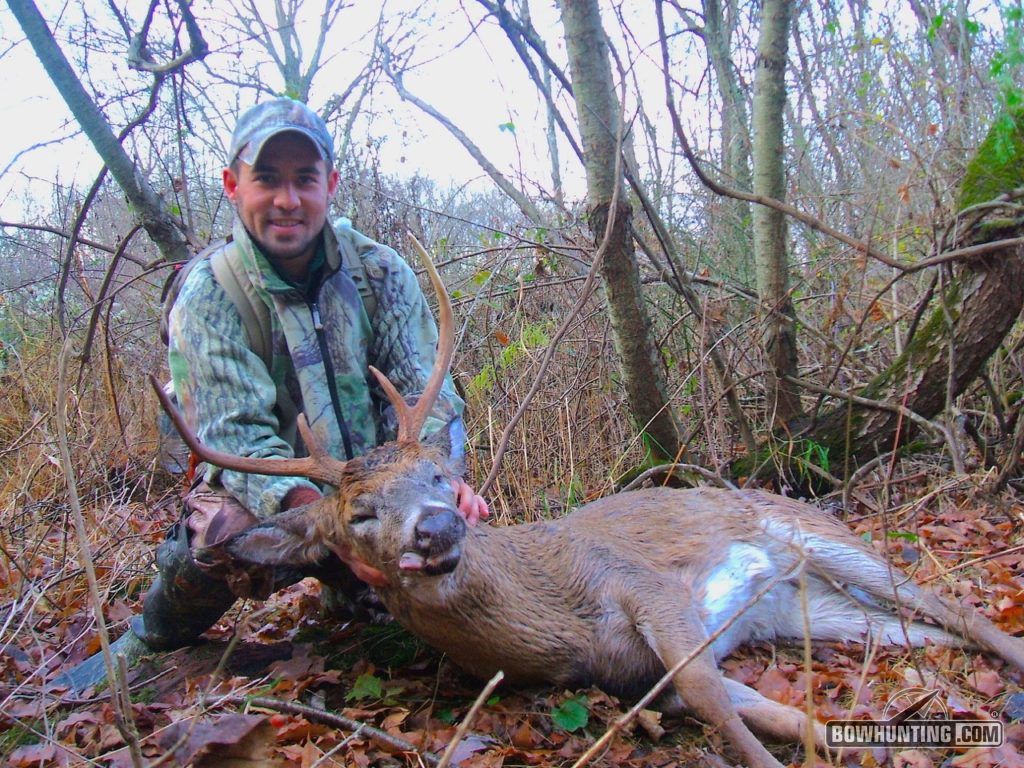
The author found his buck after a persistent grid search effort.
As the point man, Ryan was using the creek as a boundary to establish our grid line and eventually came to where the buck had crossed the water, piled up and expired on the opposite bank. It was the second zone we decided to search. A weight was lifted from my shoulders as I rushed through the underbrush and green briar to lay eyes on my buck. Desperation and worry turned to smiles and high fives in an instant. The meat wasn’t spoiled, and a hard fought season ended happily ever after.
Even when things don’t go the way we’d like them to, finding a lost deer is still possible with smart planning, a level head and a few good friends to help with the search process. By having patience and thinking things through, even those bad shots we try to avoid can result in a successfully recovered buck and a sincere feeling of relief.
